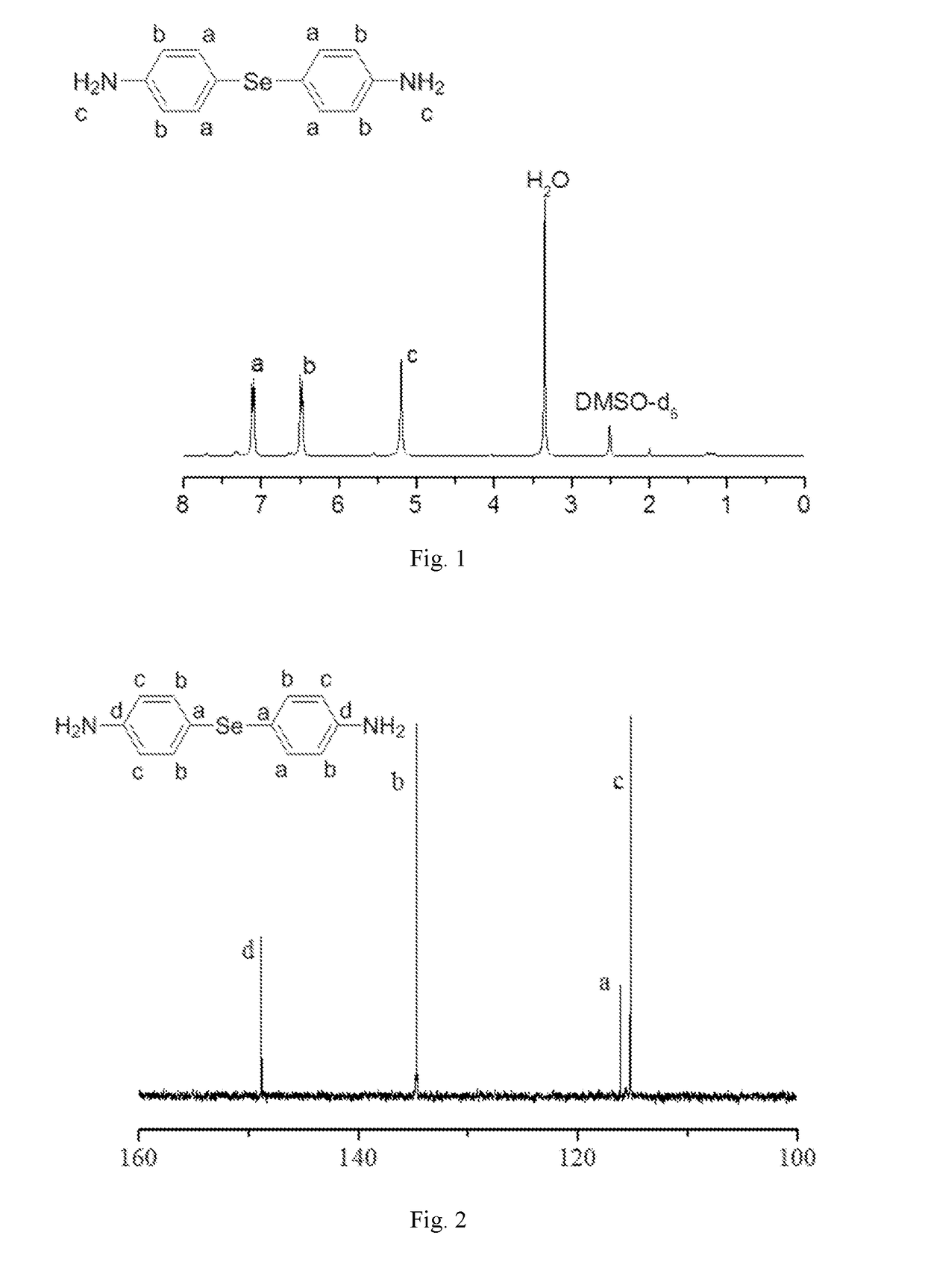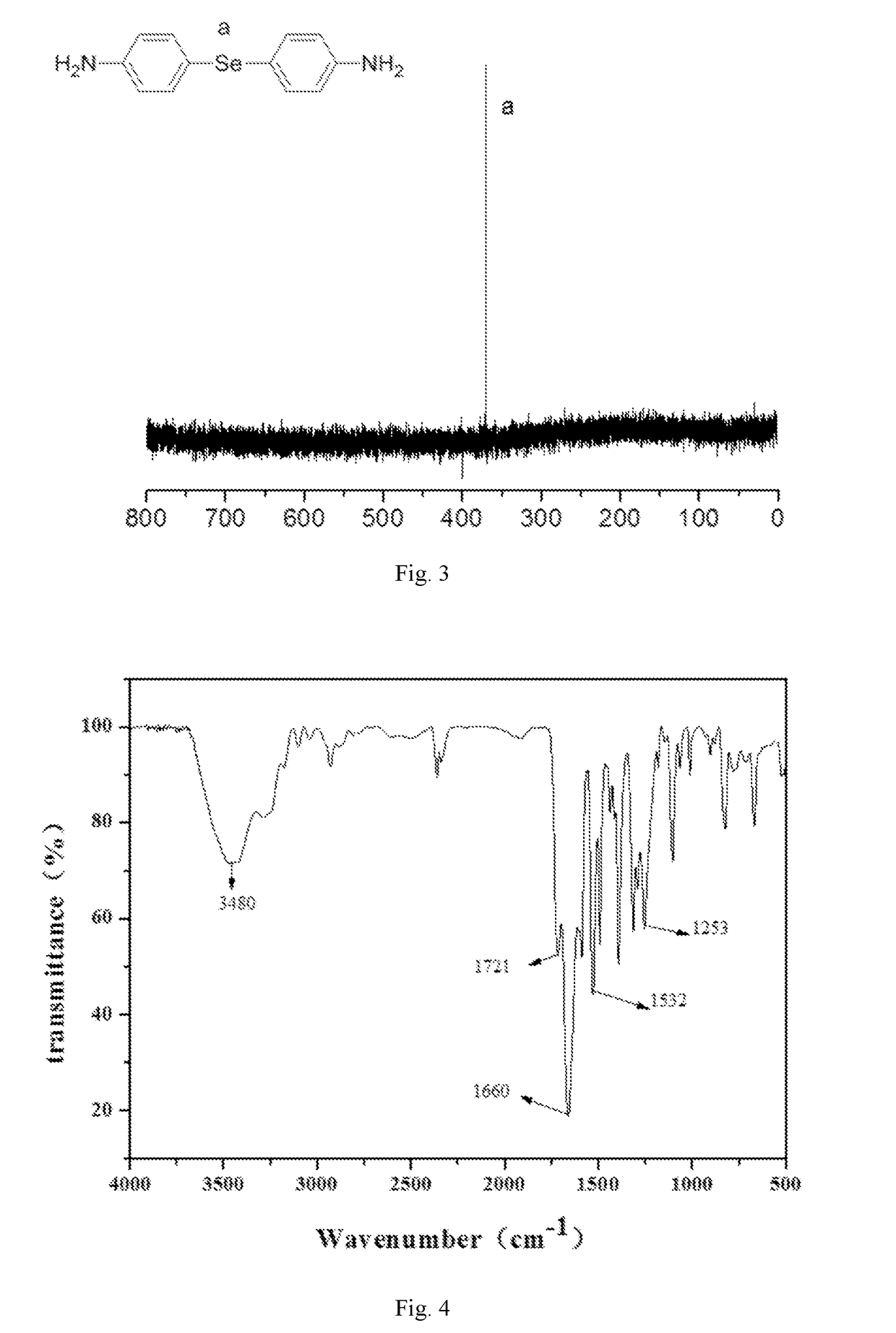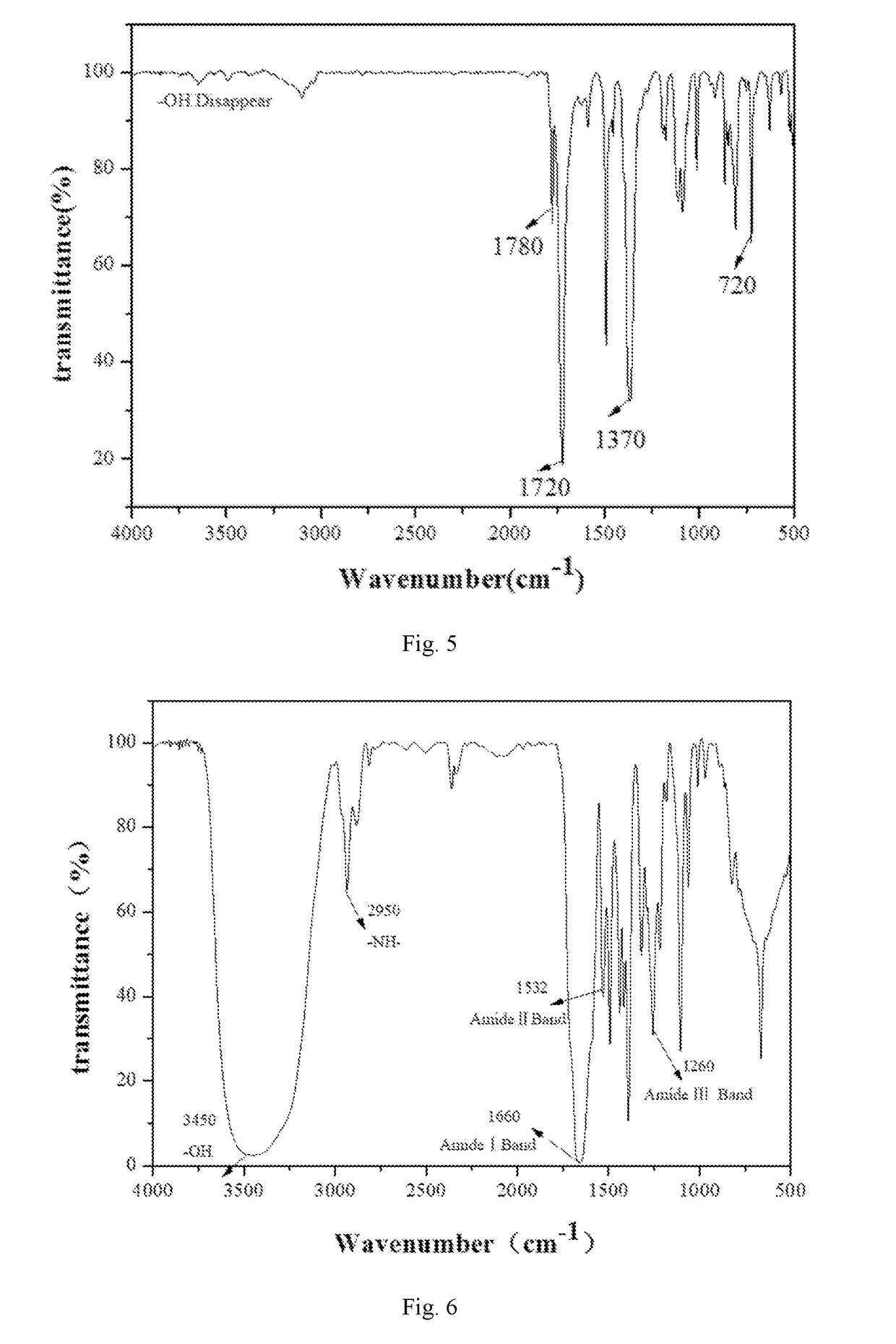Selenium-containing polyimide polymer, preparing method and use thereof
a polyimide and selenium-containing technology, applied in the field of polymer materials, can solve the problems of poor thermal stability of polymer, undesirable film-forming properties, and limited increase of polyimide material refractive index, so as to increase the refractive index and ultraviolet-absorption of polymer material, increase the abbe number, and increase the effect of refractive index
- Summary
- Abstract
- Description
- Claims
- Application Information
AI Technical Summary
Benefits of technology
Problems solved by technology
Method used
Image
Examples
embodiment 1
[0061]Preparation of a Selenium-Containing Polyimide Polymer Film.
[0062](1) Synthesis of selenide diamine monomer 4,4′-diamino diphenyl selenide (BASP) a 50 mL 3-neck flask was charged with argon for 2 hours to remove air, p-iodoaniline (10 mmol), CuI (1 mmol), K2CO3 (10 mmol) and DMSO (20 mL) were added into the 3-neck flask and stirred to dissolve p-iodoaniline, and dried selenium powder (6 mmol) was added into the reaction system, and the reaction temperature was previously set as 120° C. The reaction apparatus was protected from light and continuously charged with argon. The reaction process was followed by TLC, and after about 12 h, p-iodoaniline was essentially consumed. The reaction solution was naturally cooled, filtered by suction in the dark, washed with water, and extracted with ethyl acetate (40 mL×3). The organic phase was dried with anhydrous sodium sulfate, filtered by suction again, subjected to rotary evaporation to remove the solvent, and purified by column chromat...
embodiment 2
[0072]The steps of embodiment 2 were substantially the same as those in the embodiment 1, except that in the step (2), the dianhydride monomer was 4,4′-oxydiphthalic anhydride (ODPA), to give a selenium-containing polyamic acid PAA2; and in the step (3), the selenium-containing polyamic acid PAA2 was subjected to thermal imidization, to give a selenium-containing polyimide film PI2 (BASP / ODPA). FIG. 6 shows IR spectrum of the selenium-containing polyamic acid PAA2 obtained in this embodiment 2. It can be seen that an apparent and wide absorption peak appears at 3450 cm−1, which belongs to absorption of hydroxyl (—OH) in carboxyl (—COOH) contained in PAA; and three absorption peaks appear at 1660 cm−1, 1532 cm−1 and 1260 cm−1 respectively, which belong to characteristic absorption of amide structure (—CONH—). FIG. 7 shows IR spectrum of the selenium-containing polyimide film PI2 (BASP / ODPA) obtained in this embodiment. It can be seen that the initial strong absorption peak at 3450 cm...
embodiment 3
[0074]Preparation of Selenium-Free Polyimide Polymer Film.
[0075](1) Preparation of Polyamic Acid
[0076]4, 4′-oxydianiline (ODA) (0.2640 g, 1 mmol) was dissolved into 3 mL anhydrous DMF, the resulting mixture was stirred in an argon atmosphere until ODA was completely dissolved, and argon was continually introduced for half one hour. A dianhydride monomer pyromellitic anhydride (PMDA) (0.2189 g, 1 mmol) was then added. The reaction temperature was maintained at 30° C. and the reaction solution was stirred for 3 h, to give a polyamic acid PAA3 with a solid content of 15% by controlling the dosing ratio.
[0077](2) Preparation of Polyimide (PI) Film
[0078]the polyamic acid PAA3 was rapidly applied on a glass plate for thermal imidization, and the following temperature program was performed: heating at 70° C. for 1 h, at 100° C. for 1 h, at 150° C. for 1 h, at 200° C. for 1.5 h, at 250° C. for 1.5 h and at 300° C. for 0.5 h. After naturally cooling to room temperature, the glass plate was i...
PUM
| Property | Measurement | Unit |
|---|---|---|
| temperature | aaaaa | aaaaa |
| temperature | aaaaa | aaaaa |
| molar ratio | aaaaa | aaaaa |
Abstract
Description
Claims
Application Information
 Login to View More
Login to View More - R&D
- Intellectual Property
- Life Sciences
- Materials
- Tech Scout
- Unparalleled Data Quality
- Higher Quality Content
- 60% Fewer Hallucinations
Browse by: Latest US Patents, China's latest patents, Technical Efficacy Thesaurus, Application Domain, Technology Topic, Popular Technical Reports.
© 2025 PatSnap. All rights reserved.Legal|Privacy policy|Modern Slavery Act Transparency Statement|Sitemap|About US| Contact US: help@patsnap.com



